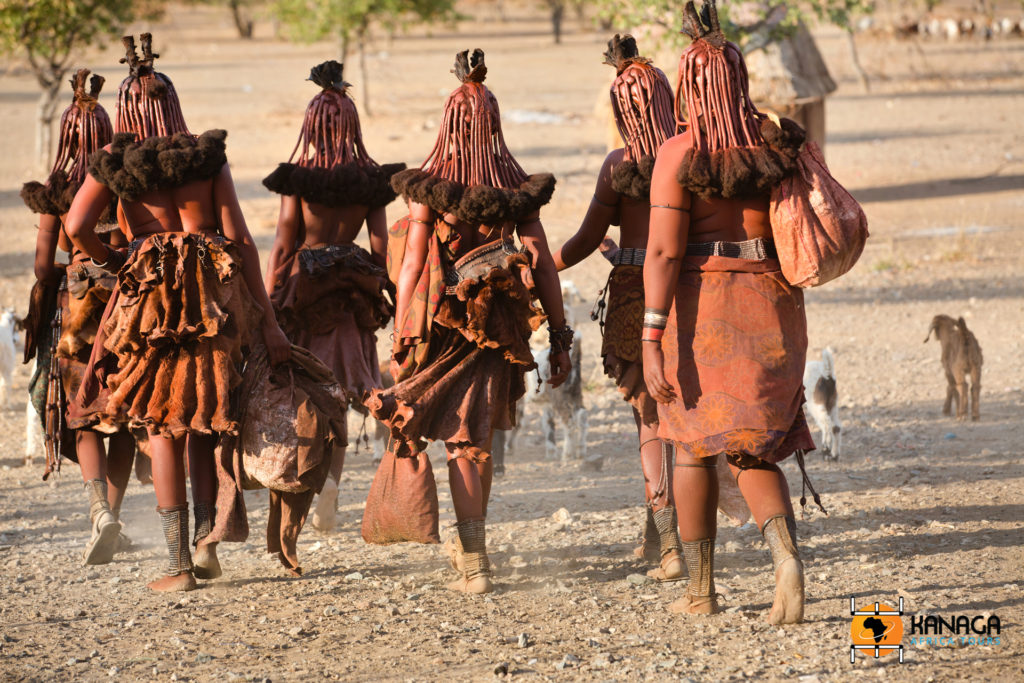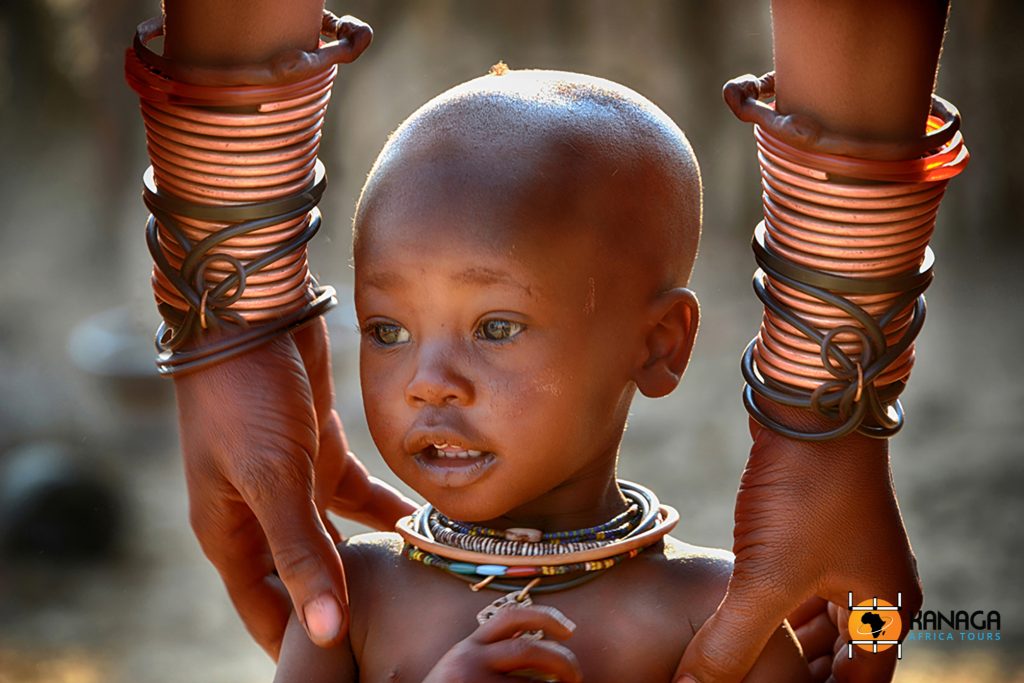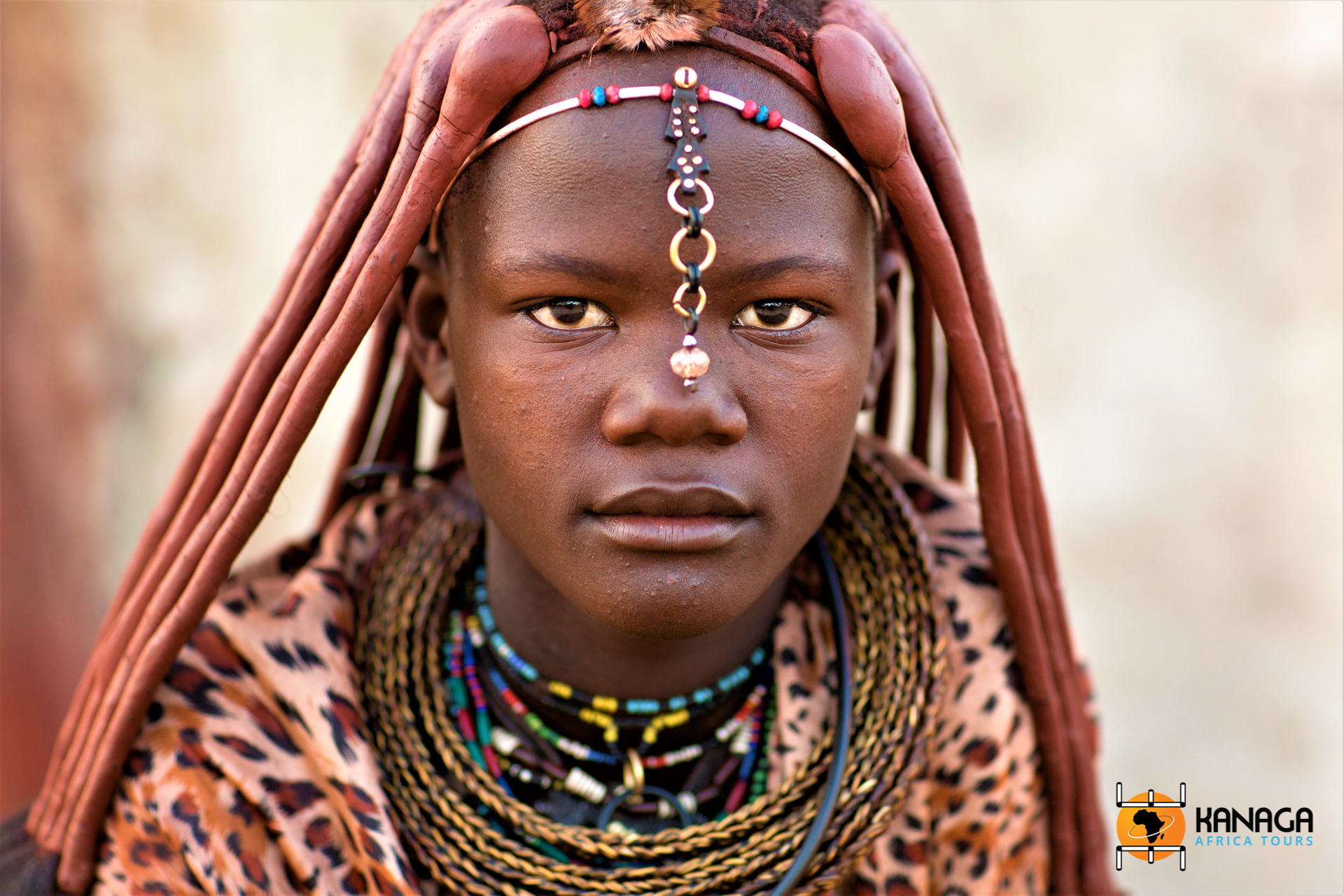In the desolate Kunene region, in the north of Namibia, a fascinating people lives, rich in traditions unchanged over time, a proud people who have been able to adapt to living in one of the country’s most inhospitable environments, making it their strength and identity, leading a nomadic or semi-nomadic existence of subsistence and pastoralism. The Himba, ‘the red people’, are the sole keepers of the secrets of Kaokoland.
An experience out of time, through boundless landscapes of incredible desolation and beauty, at times hostile and totally wild. Leaving Damaraland and its rock paintings with the famous ‘Withe Lady’, one travels through the stony valleys and canyons of the Kunene region, which climb over 2,000 metres in altitude in an increasingly rocky and mountainous environment in the far north, until they explode into the magnificent Ruacana and Epupa waterfalls, comparable in beauty to the Victoria Falls. Here, with the exception of the main road that reaches the small regional capital of Opuwo, a network of tracks that are difficult to negotiate, except with a good 4×4, penetrate into the heart of the Himba lands, the Kaokoland or Kaokovelt.
The Himba, people of Herero origin, had to migrate to Angola in the 19th century to escape the constant tribal wars with the Nama, later returning to their ancestral lands in the early 20th century, however remaining ‘ghettoised’ by South African apartheid policy. Their flight and isolation has essentially preserved them from prolonged contact with German and South African settlers, unlike the Herero, with whom they nevertheless continue to share the same language, but not the same traditions, customs and traditions, which, being handed down intact from generation to generation, have allowed Himba society to survive.
One of the first aesthetic identity signs of the Himba, is the extraction of the two lower incisor teeth in adolescence, a tribal sign of belonging, a traditional identity card that distinguishes them from the Herero. But surely the characteristic that has made them famous and fascinating in the eyes of the whole world is the custom of the women to sprinkle their bodies and hair with a clay mixture of butter, herbs and ochre, which gives their skin its typical vermilion colour, earning them the nickname ‘red people’.
Remaining almost entirely animist, the Himba universe revolves around the natural elements and what nature offers them, living in symbiosis and balance with it, with its resources, which are few and essential in Kaokoland, and knowing perfectly its limits and potential dangers. Of particular importance in a camp is the sacred fire that burns constantly between the bramble fence of the cattle and that of the house of the head of the family. Linked to religious beliefs and animist deities, it clearly also has a practical value, that of keeping away the ferocious beasts that swarm in the wilds of Kaokoland, lions, cheetahs, leopards and desert elephants, and also providing a perpetual source of energy. It is the women who do the hardest work, from managing the hearth to collecting firewood and water, from building the traditional huts, woven of branches and covered with clay and dung, to grazing the cattle near the camp, always reconciling the daily tasks with the fundamental aesthetic care of their femininity, which is renewed daily in the magical red mixture and beautiful traditional hairstyles.
Kaokoland, the forgotten, timeless country nestled in barren ravines and crevasses, reveals the intimate secrets of a life on the edge of survival within a traditional kraal.







